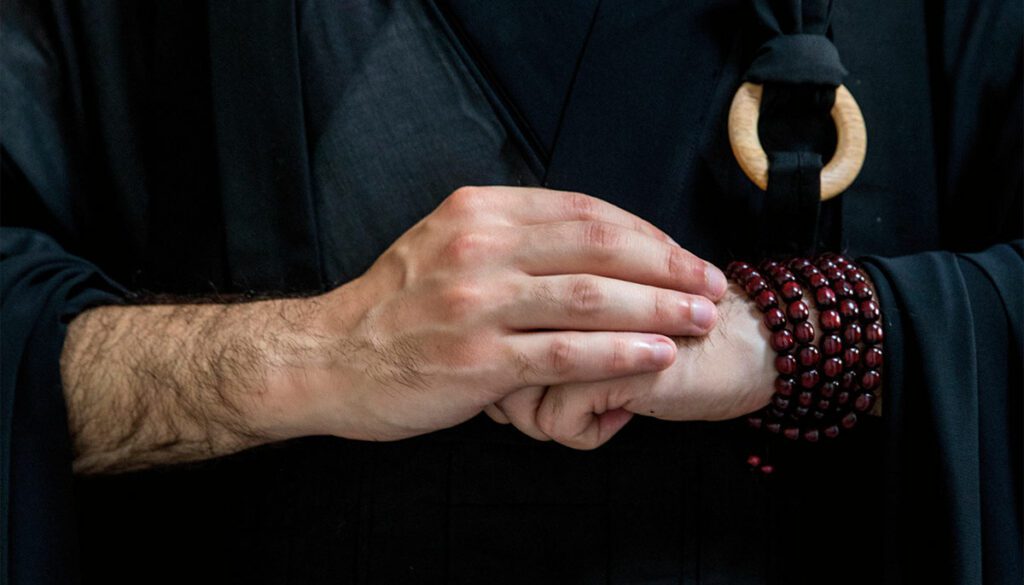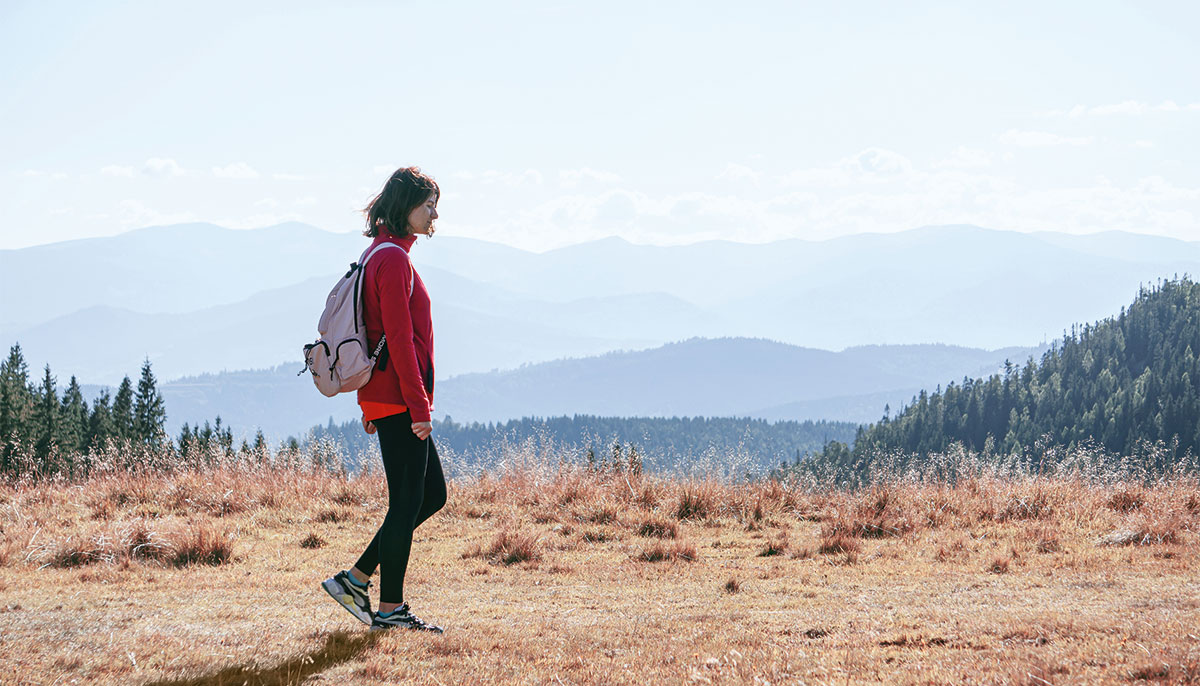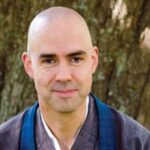The first time I tried walking meditation, it was with a Soto Zen group, and I fell on my face—literally. My leg had fallen asleep during zazen, and I didn’t even make it one step before I hit the ground. Not great. And when I finally got my feet under me again, the other people in the room were moving so slowly that, at first, I wasn’t sure if we’d started or not.
The second time I tried it, I was at a Thich Nhat Hanh-style retreat in the woods. It turns out that Buddhists do walking meditation in all kinds of different ways. This time we walked outside in pairs, holding hands and pausing every so often at the sound of a mindfulness bell. (I know everyone paused because I, ever mindful, looked around each time to check.)
Then the third time was in a Rinzai Zen zendo, and when the bell rang, we practically broke into a run. I just trotted along, trying not to crash into anything. I had no idea what I was doing. And I didn’t really care, because in my understanding, walking meditation was just a break from real (seated) meditation—and I was always ready to take a break.
Any discussion of walking meditation starts there—with this idea that it’s just something we do between sessions of the thing that really matters. That it’s a chance to stretch our legs a little. That it’s a breather. That it’s secondary. And if that’s our approach to it, then that’s all it is. But what it offers—what’s right beneath our feet—is a path to living our lives on purpose.

Almost all approaches to walking meditation come down to two simple instructions. The first is to synchronize your breath with your steps. That could be completing a full inhalation and exhalation over the course of one half-step, or it could be something like breathing in for seven steps, then breathing out for ten. Whatever the style, the relationship between breath and step is intentional, and it’s consistent over the course of the session.
The second is instruction to notice that you’re walking. Or, to put it another way, walk on purpose. Slow down. Feel your feet on the ground. Let walking be an activity you do with awareness, rather than simply a mode of transportation.
In my tradition, Soto Zen, we do what is called kinhin—“moving in a straight line.” Almost no written instructions for how to do kinhin can be found in the traditional literature. The founder of the Soto school, Dogen—who wrote detailed instructions for how to wash your face, brush your teeth, cut vegetables, open doors, and on and on—wrote only that in kinhin, we take one half-step for every full breath. Not surprisingly, there are various interpretations of what that looks like on the ground, even eight hundred years later. But here’s how I learned it:
First, stand up straight. Take a moment to really plant your feet on the ground and find your posture. Heels are about one fist apart, feet pointed outward at an angle. If you’ve just stood up from zazen, let the blood return to your legs. Wiggle your toes. As in zazen, feel the breath coming into your belly and then gently going back out.
Next, place your hands in front of your chest in shashu. To make shashu, first form a fist with your left hand, wrapped around your thumb. Place that left hand against your sternum. Then, rest the right hand on top of the left—open, right thumb resting on the left thumb, fingers pointed to the left. Your forearms are parallel to the ground, elbows resting against your ribcage. (This placement of the hands is not unique to kinhin, by the way—it’s generally how one walks around in a Zen monastery.)
Similar to zazen, your eyes are open—not wide, but with a soft gaze aimed downward about six or seven feet in front of you. You want to see where you’re going, but you’re not taking in the landscape. You’re looking at where you are, and where you’re just about to be.
If you’re with a group, there’s a sound—a bell, or maybe a clacker—that signals it’s time to take that first step. If you’re alone, then just start whenever you feel settled in your spot.
Inhale, and as you do, slowly lift your right foot off the ground, heel first. At the top of the in-breath, lift the ball of your foot as well. As you exhale, move your foot forward so the right heel is in line with the instep of the left, then gently ground yourself as you breathe out—heel, then ball of the foot, then toes, until you reach the end of the out-breath. In this moment—for just a moment—your weight is equally distributed between both feet. Next, continue the cycle with your left foot: inhaling, lining up the left heel with the right instep, setting it all down, grounding again.
This is done slowly. Dogen said, remember, to take only a half-step in the time it takes to take a full breath. In Kinhinki, one of the only texts we have on kinhin, Menzan Zuiho (1683–1769) wrote that we should move forward “like we’re standing in one place.” Whatever this practice is for, it’s not for going anywhere.
It’s easy in kinhin to lose your balance—not only because it’s strange to move so slowly, but because we don’t ordinarily think about walking at all. Like the act of breathing, we don’t have to think about walking. But when we do think about it—when we notice this is what I’m doing right now—it changes how we do it, whether that’s our intention or not. We become self-conscious about it. A lot of Zen practice is like this, some version of becoming a beginner at something we already know how to do.
In most Zen communities, kinhin is practiced in a clockwise rectangle around the room. When you reach a corner, you just step and turn so that your feet are together again, and you start again with the right foot. But I’ve trained at monasteries that had a “kinhin hallway,” where monks just practiced going back and forth. That’s closer, according to Menzan at least, to how it was practiced in the Buddha’s time—just going a few steps one direction, turning, and coming straight back. Thus, “moving in a straight line.”
The whole session, start to finish, usually lasts ten to fifteen minutes. At the sound of another clacker or bell, everyone finishes by bringing their feet together for a moment and bowing in shashu (or not, depending on the customs of the place). From there, everyone walks at a normal pace back to where they started, bows to the group, and returns to zazen.
Kinhin practiced in this way is a very formal, very conspicuous way to do walking meditation. It has its own time, its own place, even its own instruments. But you can also do it undercover—on the side of the road, or in your backyard, or on a beach. Just inhale, and as you start to breathe out, take a step. Feel how your weight shifts to your other leg, how your entire body understands how to make that complex move. Then feel how, when your foot comes down, it pushes against the earth, how your body shifts again, how gravity keeps you right here, right in this spot. Repeat. It can take a while to find your balance in a practice like this, especially if you’re going really slowly, but it doesn’t take practice to just walk. You’ve been doing that for a long time.
I was asked once how to do kinhin in a wheelchair. The question is important—it reveals that the practice is never really about walking. It’s about harmonizing body, breath, and mind. So instead of finding the rhythm in the steps, you can find the rhythm in the slow turning of the wheels, pushing forward as you exhale and repositioning your hands as you inhale. At its heart, it’s just the practice of performing a simple action for its own sake, over and over.
Many times, I’ve heard kinhin explained as “walking zazen” or “zazen in motion.” I get that—it’s an invitation to bring a certain quality of intention and awareness into this other activity. But that kind of instruction privileges zazen in a way that overlooks its literal meaning: “seated meditation.” Zazen is what Zen practice looks like when we’re sitting down. Kinhin is what it looks like when we walk. In my understanding, the point isn’t to rank them, or to make one into a version of the other. It’s to find what makes them the same, so that we can discover what Zen practice looks like when we drink coffee, or tie our shoes, or hug someone when they’re crying. When we choose this breath, this step, this posture—when we do whatever we are doing on purpose, as a practice—we choose our life in this moment. The choice changes the activity. The activity changes our life.
Practice understood in this way can feel small, subtle. So subtle, in fact, that someone watching may not realize anything is happening at all. Even to us who are doing it, it can feel like we’re standing in one place. But then there’s another breath. And another step. Moving forward, not going anywhere.
This article is from the March 2024 issue of Lion’s Roar magazine.

